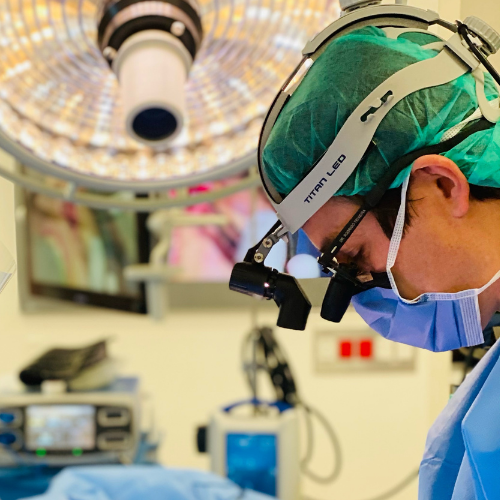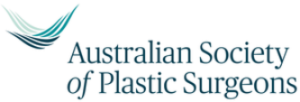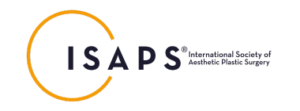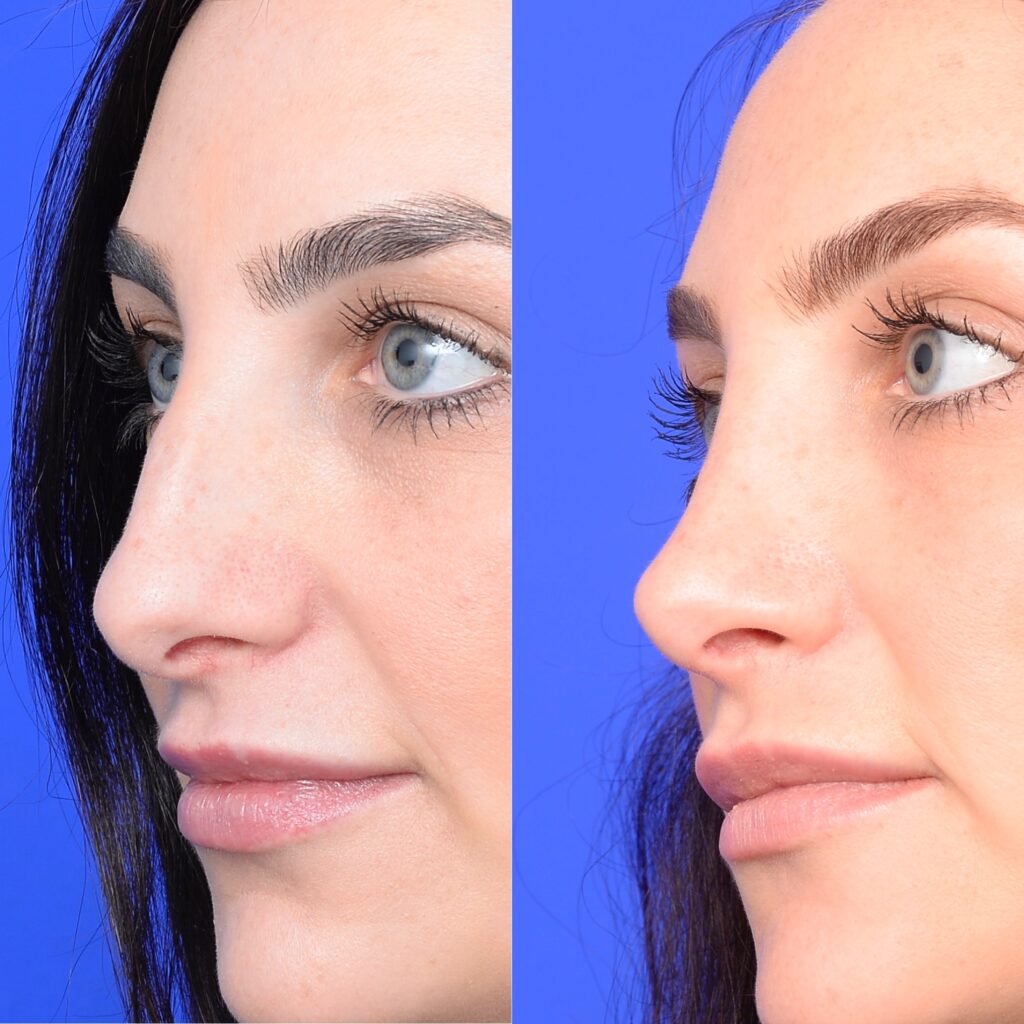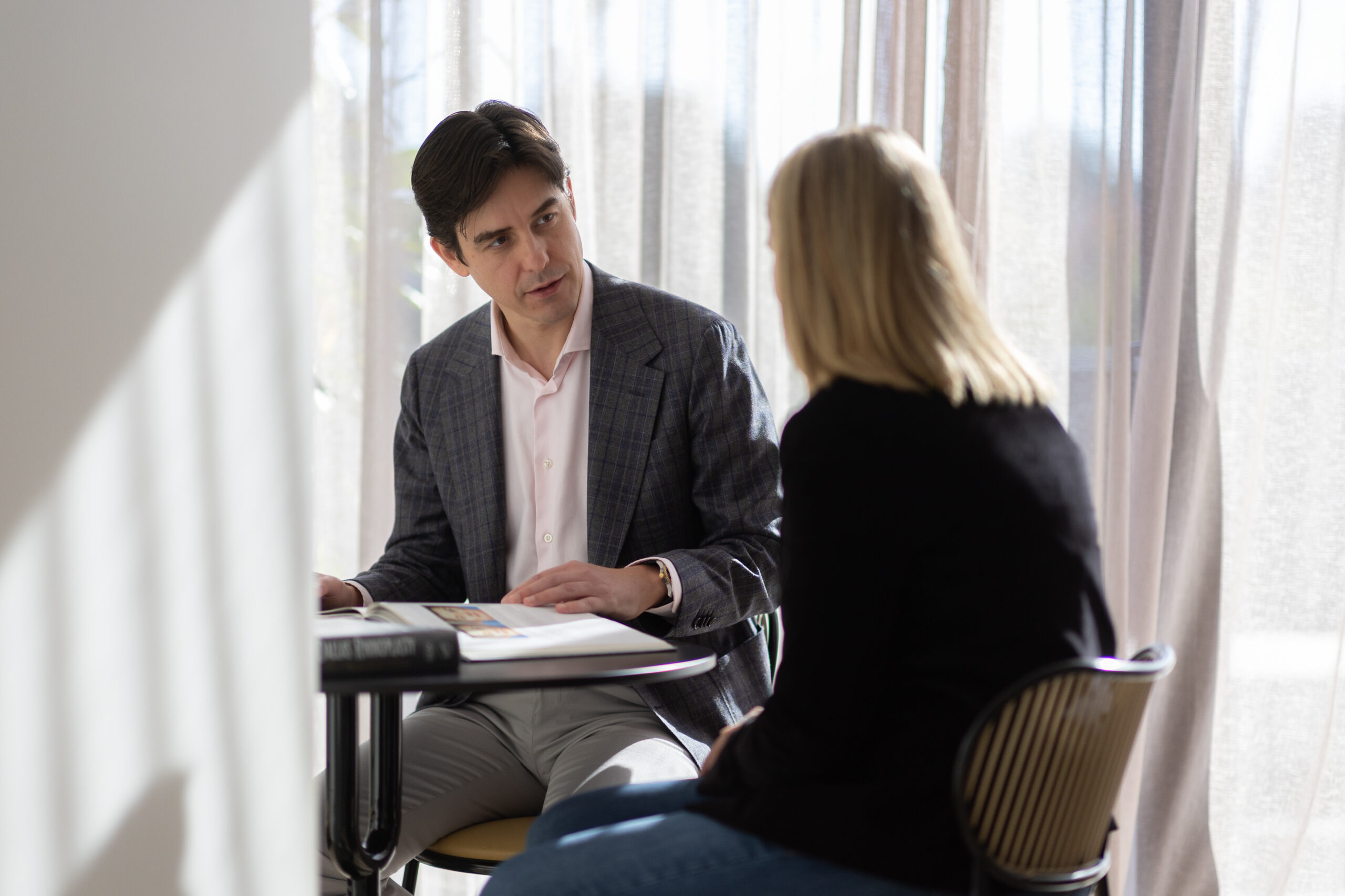Rhinoplasty Melbourne
Rhinoplasty, commonly known as a nose job, is a surgical procedure that can alter the shape and size of your nose. This procedure can be done for cosmetic or functional reasons to improve breathing difficulties.
Rhinoplasty (nose job)
Each person’s face is unique and is the canvas where the nose is a central feature affecting your facial symmetry and proportions. The nose also has a crucial role in breathing at rest, during exercise and while sleeping.
Rhinoplasty, or nose reshaping surgery, is an effective option for improving both the form and function of your nose with subtle modifications to the size, shape, or contour of the nose for cosmetic or medical reasons.
Medical reasons include a deviated nose caused by trauma or a deviated septum affecting your breathing. With Dr. Rodrigo’s experience in nose surgery, he has successfully treated patients with various reasons for seeking rhinoplasty, such as correcting the shape or breathing difficulties, and complicated nasal reconstruction work for those who have undergone previous unsuccessful surgeries or significant nasal injuries.
Dr. Rodrigo is a skilled plastic surgeon experienced in rhinoplasty surgery based in Melbourne, Australia. He will work closely with you to tailor a treatment plan that suits your requirements, and with a focus on safety and long-lasting results.
At Unveil Plastic Surgery we believe that everyone should make an informed decision when considering rhinoplasty. Our team is always available to provide necessary information and expert advice to ensure that you feel comfortable and well-informed throughout the process.
Are you experiencing difficulty breathing through your nose?
There are several potential causes that could be contributing to your breathing problems, and it’s important to understand the different types of obstructions that can occur. One common issue is related to the external valves of the nose, which can collapse during breathing and reduce airflow. Additionally, the internal valves can also contribute to breathing difficulties, particularly if the upper lateral cartilages are obstructing airflow.
A deviated nasal septum or enlarged nasal turbinate can also make it challenging to breathe through the nose. Luckily, there are effective treatments available for these conditions, including surgery to correct a deviated septum or remove excess turbinate tissue. By identifying the underlying cause of your breathing problems, you can find the right solution to help you breathe easier.
Cosmetic Rhinoplasty
Are you considering cosmetic rhinoplasty? It’s important to understand that every nose is unique and requires a thoughtful and individualised approach. A skilled plastic surgeon will take into consideration your facial features and heritage to create the best result
Before you start looking for a plastic surgeon for your rhinoplasty procedure, it’s important to have a clear understanding of your goals and expectations. People choose cosmetic rhinoplasty for a variety of reasons, including wanting to correct a specific feature. By understanding your motivations and expectations, you can work with your surgeon to develop a treatment plan that will help you achieve your desired results.
Cosmetic rhinoplasty is a surgical procedure that addresses a variety of common concerns related to the appearance of the nose. Whether the nose is disproportionately large or small for the face, has a prominent bump or hump on the bridge, or appears too flat, a skilled surgeon will take into account the patient’s unique facial characteristics.
Additionally, cosmetic rhinoplasty can address concerns such as a droopy or upturned nasal tip, asymmetry or deviation, and wide nostrils. Patients with a deviated nasal septum causing blockage can also benefit from rhinoplasty. By working with a skilled and experienced plastic surgeon, patients can achieve the best results.
Rhinoplasty results
before and after photos
- Any surgical or invasive procedure carries risks. Before proceeding, you have the option to seek a second opinion from an appropriately specialist surgeon
- Recovery time and treatment results will vary from patient to patient and depend upon a variety of individual patient factors
Ask to see before and after photos and have a better idea of results. Photos and simulation should not be used to predict the final result. Instead, they facilitate communication between you and your surgeon when talking about your concerns and your goals.
Surgical techniques in rhinoplasty
If you’re considering rhinoplasty, there are various surgical techniques to choose from, each with its own unique advantages and considerations.
Open and Closed Rhinoplasty
There are two main types of incision for rhinoplasty: Open and Closed Rhinoplasty. Closed rhinoplasty involves incisions made only inside of the nose, hidden from view. Open rhinoplasty, on the other hand, involves adding an extra tiny incision on the outside of the nose, on the columella, to maximise exposure of the underlying structures for better reshaping. Both approaches have their advantages and considerations, and your surgeon will help you determine which one is best suited for your individual needs. It’s essential to keep in mind that every patient’s nose is different and requires a unique approach, so it’s crucial to consult with a qualified and experienced surgeon before making any decisions.
Preservation Rhinoplasty
One increasingly popular option is preservation rhinoplasty, which is minimally invasive and preserves the natural structure of the nose while achieving the desired aesthetic changes. Preservation rhinoplasty involves a careful manipulation of nasal structures, resulting in a remodelling without compromising nasal function or stability.
Some studies suggest that there is less risk of breathing problems after preservation rhinoplasty due to its avoidance of removing too much nasal tissue, which can narrow air passages. Preservation rhinoplasty typically requires minimal alteration of the nasal bone, leading to less bruising and swelling during the recovery process compared to other surgical methods.
Structural Rhinoplasty
In some cases, structural rhinoplasty may be required to achieve the desired outcome. This approach involves reshaping or removing existing nasal cartilage and bone to create a more desirable appearance. It’s crucial to balance these approaches, considering factors such as existing anatomy, medical history, and the expertise of your surgeon.
Hybrid Approach
Another approach is the hybrid technique, which incorporates principles from both preservation and structural approaches for a versatile and effective technique. It focuses on preserving tissue on the nasal dorsum while also using targeted tissue manipulation to achieve desired surgical goals.
While nasal fillers are a non-surgical alternative, they come with high risks and require ongoing maintenance. HA fillers can also migrate and spread to deeper tissues of the nose, causing lumps and inflammation.
At the end of the day, finding the right balance between preservation and structural approaches is crucial when considering rhinoplasty. Consult with an experienced surgeon, like Dr Rodrigo, to assess your unique case and guide you towards the most appropriate approach for your desired outcome.
Augmentation Rhinoplasty
Augmentation rhinoplasty is a popular procedure performed to change the height and projection of the nose, particularly for individuals with low, flat, and wide noses, which is more common in Asian and African ethnicities. This procedure involves the use of implants or autologous tissues to augment the nasal dorsum and the nasal tip, as well as reshaping the nasal tip for a refined appearance.
Nasal implants vs Rib Cartilage Grafts
Implants such as silicone or porous polyethylene implants are commonly used for augmentation rhinoplasty, but there is a risk of infection and implant rejection. To minimise this risk, autologous tissue reconstruction using one’s own cartilage or cadaveric rib cartilage grafts is a superior option in terms of biocompatibility and longevity of the procedure. The use of autologous rib cartilage, in particular, is gaining popularity as it provides more natural-looking results and a lower risk of infection and rejection.
Hybrid augmentation rhinoplasty
Hybrid augmentation rhinoplasty, which combines both implant and autologous tissue techniques, has also emerged as a popular option for patients who require a more significant augmentation. This technique allows for a more customised approach to the procedure, with the implant used to provide the initial augmentation, and the autologous tissue used to fine-tune the shape and appearance of the nose.
S-line rhinoplasty
S-line rhinoplasty is another emerging trend in augmentation rhinoplasty. This procedure focuses on creating an S-shaped profile of the nose, giving it a more refined appearance. This technique involves both augmentation of the nasal dorsum and reshaping of the nasal tip to create the desired S-shape.
In conclusion, augmentation rhinoplasty is a popular procedure for individuals who desire a more prominent and refined nose. The use of autologous tissue reconstruction is a superior option due to its biocompatibility and longevity. Hybrid augmentation rhinoplasty and S-line rhinoplasty are emerging trends in the field and offer patients more customized and refined results.
Revision Rhinoplasty
Revision rhinoplasty, also known as secondary rhinoplasty, is a surgical procedure that aims to improve or correct the results of a previous rhinoplasty. This procedure can be carried out for both aesthetic and functional reasons, such as difficulty breathing.
Minor touch-ups may only require small adjustments, such as correcting a minor bump or asymmetry. However, major redo surgery may be necessary to correct more significant issues, such as over-resection of cartilage or bone.
It’s important to communicate clearly with your surgeon about your concerns and desired outcome, as revision rhinoplasty can be more challenging than the initial surgery. It’s also recommended to seek a second opinion for reassurance and to ensure the best possible outcome.
While revision rhinoplasty can be a more complex procedure, it can provide improved results and satisfaction for patients who were not fully satisfied with the outcome of their initial rhinoplasty.
Rhinoplasty Frequently Asked Questions
When considering rhinoplasty, it is important to take into account the associated costs. The cost of the procedure can vary widely depending on factors such as the type of rhinoplasty being performed, the surgeon’s experience, and the facilities where the surgery is taking place. For privately insured patients that are eligible for a rebate, the total cost of rhinoplasty can start from $10,000, while uninsured patients or cosmetic rhinoplasty typically starts from $16,000. It is important to consult with a qualified surgeon to discuss the specifics of your individual case and to obtain an accurate cost estimate.
If you’re considering rhinoplasty, it’s important to know whether it is covered by Medicare or private health insurance. Cosmetic rhinoplasty procedures are typically not covered by private health insurance and are not eligible for Medicare rebates. However, if there is a functional or medical component, such as a problem with breathing or a congenital deformity, then that portion of the procedure may be covered by insurance or eligible for a Medicare rebate. Eligibility for a medical rebate can be determined by using the NOSE scale assessment tool, which includes questions about nasal congestion, blockage, and breathing difficulties during sleep and exercise. It’s important to discuss your individual situation with your surgeon and insurance provider to determine coverage and costs.
Revision rhinoplasty is a surgical procedure aimed at correcting unsatisfactory outcomes of previous nose jobs. The cost of revision rhinoplasty varies depending on the extent of the procedure and the surgeon’s experience. In some cases, the original surgeon may offer revision surgery at a lower rate or no cost as part of their revision surgery policy. However, if you seek a new surgeon, the cost will likely be billed as a new case. It is important to communicate your concerns clearly to your surgeon to determine the complexity of the treatment required and the associated cost.
Rhinoplasty is generally not a painful procedure, and most patients report feeling only mild discomfort or tenderness in the nose and surrounding areas. The use of internal stents or nasal packing may cause pressure, and there may be some swelling in the nose, cheek, and eyelids after the surgery. However, these discomforts usually subside within a few days. Pain management techniques, such as over-the-counter pain medication, can be used to alleviate any discomfort.
There is no ideal age for rhinoplasty as every patient’s needs and concerns are different. In general, it is recommended to wait until a person has reached their full facial growth, typically around age 17-18 for women and age 18-19 for men, before considering rhinoplasty. However, age is not the only factor to consider as individual factors such as physical maturity, emotional maturity, and overall health must also be taken into account. A consultation with a qualified plastic surgeon can help determine if a person is a good candidate for rhinoplasty and if it is the right time for them to undergo the procedure.
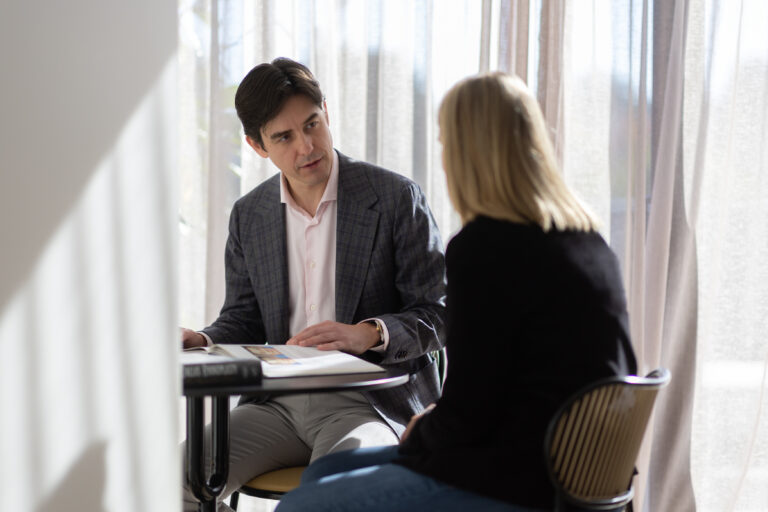
Things to consider before Rhinoplasty surgery
Before undergoing rhinoplasty, it’s important to carefully consider your motivations and expectations for the surgery. It’s important to approach the process with realistic expectations.
Think about why you want to have rhinoplasty and what specific changes you hope to achieve. Can you clearly explain your concerns and goals to your surgeon? Being able to communicate your desires effectively is key to ensuring that you’re satisfied with the results of your surgery.
It’s also important to choose a qualified and experienced surgeon, who can help you understand the potential risks and benefits of the procedure.
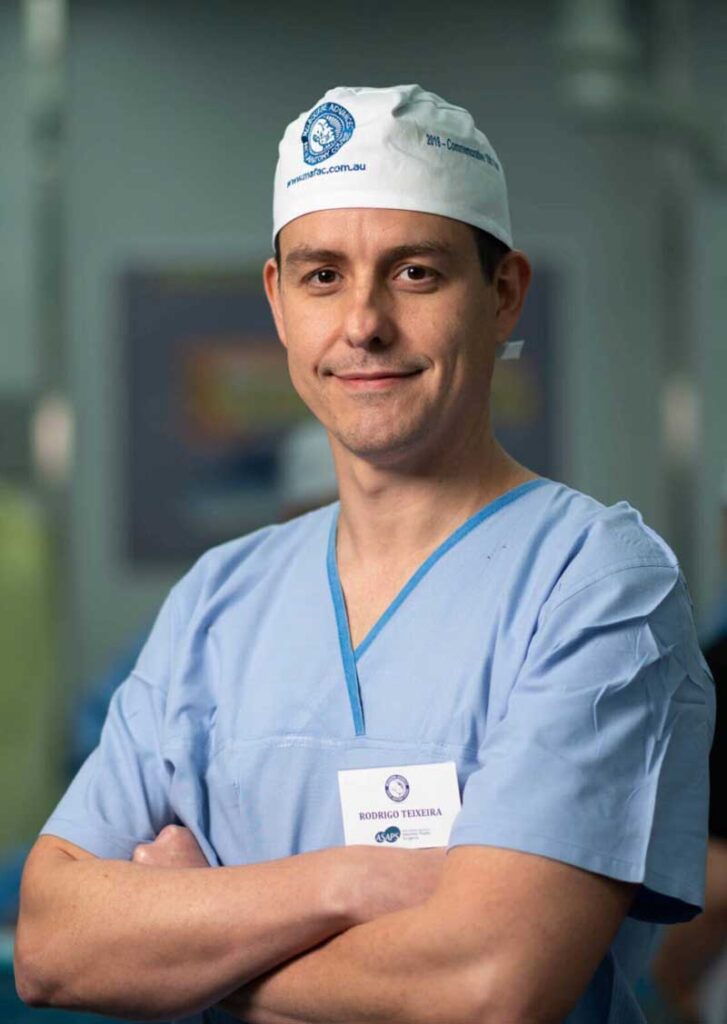
Risks and Side Effects of
Rhinoplasty Surgery
Despite the highest standards of surgical practice, complications are possible with rhinoplasty surgery. While it is a personal decision to undergo the procedure, patients should be aware of the potential risks before making a final decision.
Specific risks associated with rhinoplasty include nasal obstruction, difficulty breathing, changes in the sense of smell or taste, persistent pain or discomfort, swelling, bruising, and bleeding. In rare cases, infection, blood clots, or adverse reactions to anaesthesia may occur. Asymmetry, contour irregularities, under-correction, or over-correction of the nose may also occur, requiring revision surgery.
Additionally, small incisions are used to minimise visible scars, but some patients may be prone to developing more scar tissue. Scar tissue can also form under the skin and make the nose appear full. Prolonged swelling and internal scarring may need additional treatments.
It is important to choose a qualified and experienced surgeon to minimise the risks associated with rhinoplasty. Patient safety and satisfaction are taken seriously by Dr Rodrigo and his team, who are committed to providing excellent care and achieving great results. If you have any questions about rhinoplasty or are considering the procedure, do not hesitate to reach out and book an appointment.
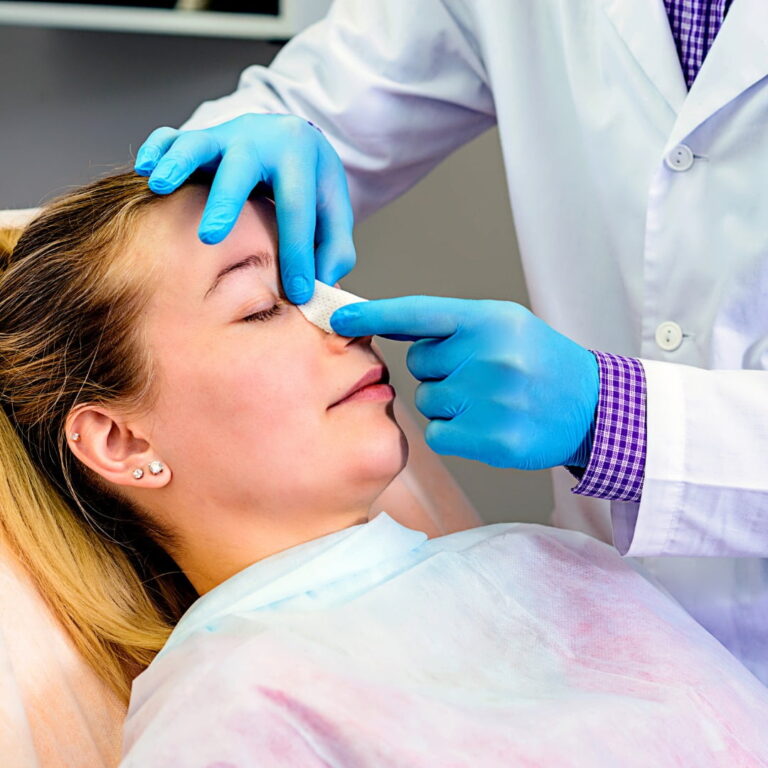
Recovery Process after Rhinoplasty
After rhinoplasty surgery, patients are typically discharged on the same day or may require an overnight stay for observation. Before the procedure, it’s important to arrange for transportation and assistance to get home. Dr. Rodrigo strongly advises having a responsible adult accompany you for up to two days as you recover.
Your nose may have soft silicone stents placed inside your nostrils, and the outside of your nose will be secured with a splint and tape. Some stitches may need removal in the first few days, and the stents and splint will most likely be removed after one week. To minimise swelling and bruising, it’s important to apply ice packs around the nose and cheeks and keep your head slightly elevated during bed rest.
Choosing an accredited and affiliated Specialist Plastic Surgeon like Dr. Rodrigo ensures that you receive a high level of care throughout your procedure and recovery. His team will provide you with detailed post-operative instructions, manage your pain, perform dressing changes, and schedule follow-up appointments until you are fully recovered. Don’t hesitate to reach out to Dr. Rodrigo and his team if you have any concerns or questions during your recovery period.
Reputable Surgeons for
Rhinoplasty Surgery
If you’re considering rhinoplasty surgery, it’s essential to find the right surgeon to ensure the best possible outcome. Here are some tips for finding a qualified and experienced surgeon:
Research credentials: Look for a surgeon who is a fellow of the Royal Australasian College of Surgeons and has extensive experience performing rhinoplasty surgery.
Schedule a consultation: Meet with potential surgeons in person to discuss your goals and concerns and get a sense of the surgeon’s approach to rhinoplasty. Dr Rodrigo offers personalised consultations to discuss each patient’s unique goals and expectations.
Ask questions: Don’t hesitate to ask questions about the surgeon’s experience, training, and approach to rhinoplasty surgery. Your surgeon should be able to provide answers to help you make an informed decision about your surgery.
Look for personalised care: A good surgeon will take the time to understand your unique needs and goals and work with you to develop a personalised treatment plan. Dr Rodrigo and his team are committed to providing personalised care and support to each patient, from the initial consultation through the recovery process.
By following these tips and working with a skilled and experienced specialist rhinoplasty surgeon like Dr Rodrigo Teixeira, you can achieve the best possible results.
